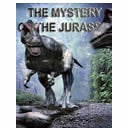
A New Prehistory
Around 300 million years ago, the Carboniferous period witnessed the dominance of colossal insects on Earth. Dragonflies, equivalent to the size of hawks, and 10-foot-long centipedes thrived in an atmosphere abundant with 35% oxygen. Amidst immense trees fueled by this oxygen, creatures like Arthropleura and Meganeura, a 10-foot herbivorous centipede cousin and the largest flying insect with a 25-inch wingspan, flourished. However, challenges arose as the heightened oxygen levels contributed to frequent forest fires.
As time progressed, declining oxygen levels and changing atmospheric conditions led to the gradual decline and mysterious disappearance of these colossal insects. While the theory initially suggested a direct link between oxygen concentration and insect size, unexpected discoveries challenged this notion. Fossils from the Permian period in France revealed giant dragonflies persisted even as oxygen levels dropped, introducing a complex interplay of factors in the extinction narrative.
Transitioning to the Jurassic period, the Liaoning region in China played a pivotal role in unraveling the evolution of feathered dinosaurs into modern birds. Fossil beds in this region, famously known as the "feather dinosaurs Pompei," showcased the journey from simple filaments to complex feathers. A four-winged theropod exemplified the trial-and-error nature of dinosaur flight. The site's 2013 discovery of feathered fossils in Siberia's Kulinda challenged previous beliefs, indicating feathered dinosaurs existed before both carnivores and herbivores.
The Liaoning region's significance extended to the dawn of mammals, challenging assumptions about their emergence. Placental mammal fossils, like Juramaia sinensis, were found to appear at least 35 million years earlier than previously believed. Scientists' ongoing studies in Liaoning, employing advanced CT scanning and genetic analyses, delve into the intricacies of early mammalian evolution. Adaptations such as tree-climbing abilities and insect-eating strategies provided placental mammals with evolutionary advantages, resulting in an ecological explosion.
In the Cretaceous period, the discovery of Eomaia scansoria further enriched our understanding of early mammals. Exceptionally well-preserved fossils allowed scientists to reconstruct a detailed picture of this early mammal's anatomy, shedding light on their evolutionary history. This continued research reshapes our comprehension of prehistoric life, connecting the stories of giant insects, feathered dinosaurs, and the dawn of mammals during the age of dinosaurs.
Directed by: Emma Baus, Bertrand Loyer



